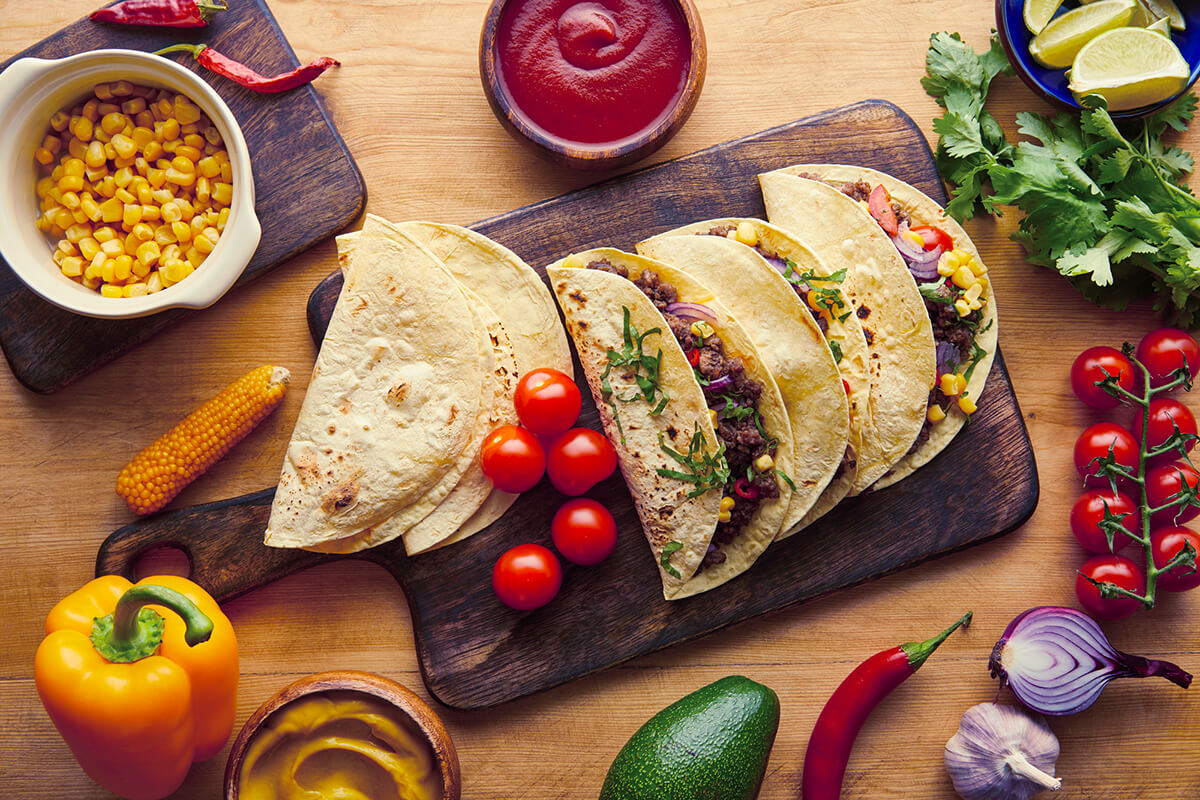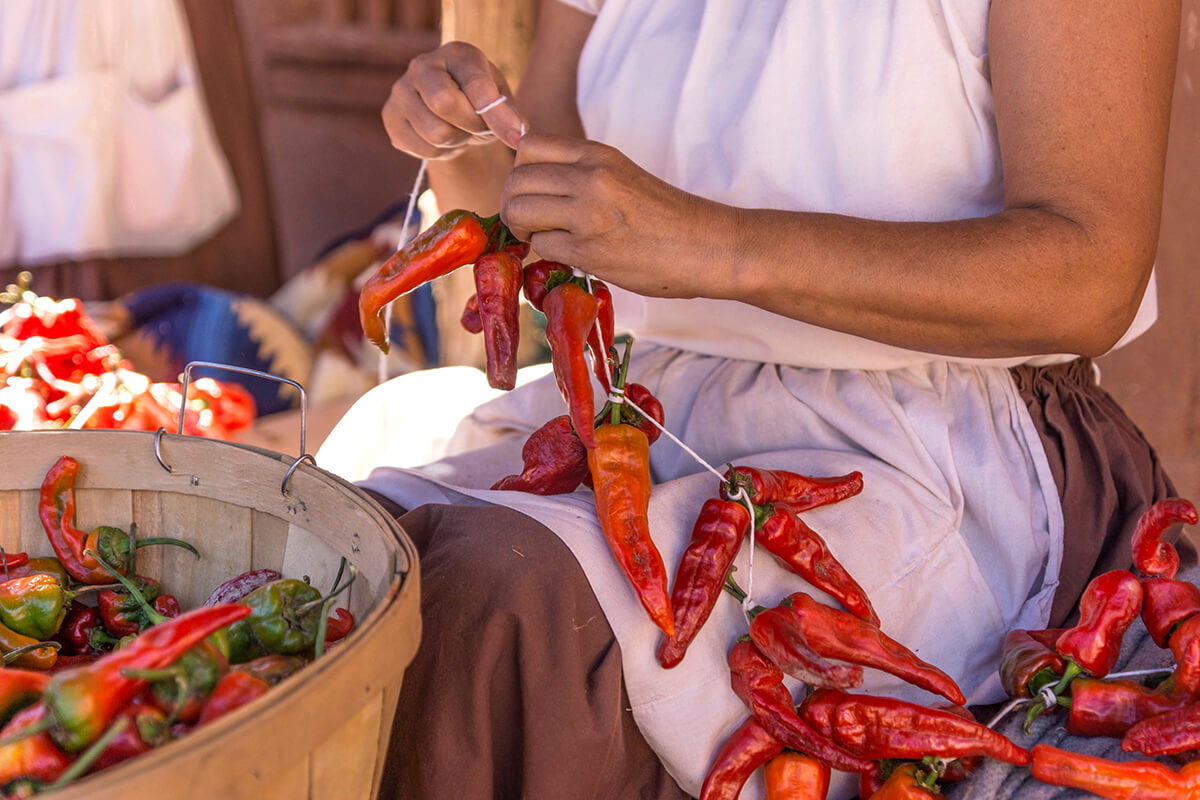Mexican beans: properties, types and ways to cook them
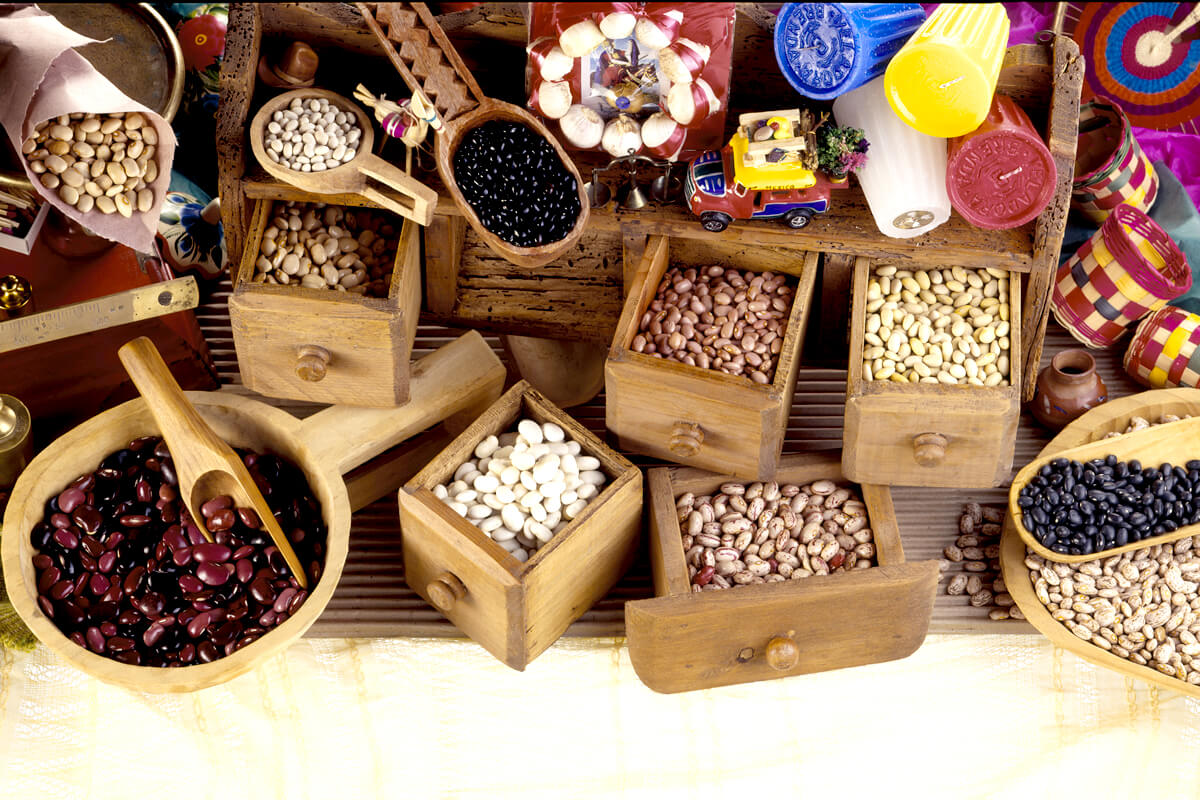
Beans are tasty and extremely versatile and they are traditionally the protagonists of the popular cuisine. It is outdated now the quite underestimating definition of beans as “the meat of the poor”. Nowadays these precious legumes have been revaluated even by the gourmet cuisine and they are used in many recipes: they are perfect for salads, or paired with tuna and onions and they are perfect with cereals. They are ideal for creamed and pureed soups and they still are the protagonists of Central American recipes like chicken with Mexican black beans, or they can be the filling for the well-known burritos and the famous corn tortillas.
The typical Mexican beans are small, with a shiny black skin and a strong, sweet and slightly spicy taste. They can be easily found on the market now, due to the ever increasing appreciation world-wide and the possibility of purchasing them online.
Some Mexican beans’ history

The discovery of the Mexican cuisine is a true sensorial experience: its recipes originate from the fusion of the native and colonial cuisine, maintaining a strong local and working-class mark.
When Aztecs, who were generally vegetarians, met the conquistadores, definitely carnivorous, they created one of the first fusion cuisines in history, generating one of the most complex and loved cuisines in the world.
In the beginning, even after the Spanish colonization, the Mexican cuisine kept using traditional ingredients, like vegetables and legumes, treated in order to give them a spicy and spiced taste. However, as a result of the new inputs, the “traditional” recipes were enriched with new dressings, like oil and vinegar, and they were matched up with dairy products and animal proteins, from farm animals’ meat.
The exchange between culinary cultures was, in any case, mutual: the Mexican cuisine was varied, colored and very tasty. During America’s exploration, the occupation of new lands extended also to getting to know new plants, which became irreplaceable even in the Old World culinary preparations. Think about tomatoes, potatoes, cocoa beans, corn, peppers and, of course, every kind of Mexican beans, that were all practically unknown in the rest of the world until that time.
On the origin of new species and new preparations
Many kinds of beans were – and still are- grown in Mexico. They can be identified by their taste, their texture and their different colors, among which the vivid black, typical of the local beans, stands out.
The American varieties drew immediately Columbus attention, who noticed the differences with the ones grown throughout Italy and Europe and decided to import them.
The new types of beans became very popular, due to their versatility, their sweet taste and their better agricultural yield.
Being a high in proteins and a very filling food, due to its high content of fibers, it became the typical popular classes’ food.
The beans use, on the other hand, is a culinary habit that Mexican people have kept, serving these tasty legumes almost at every meal, from breakfast- with eggs-, to lunch together with rice and meat and even for dinner, as tortillas filling, as a fish side-dish, or as soup main ingredient.
Beautiful and good: Mexican beans’ properties and benefits
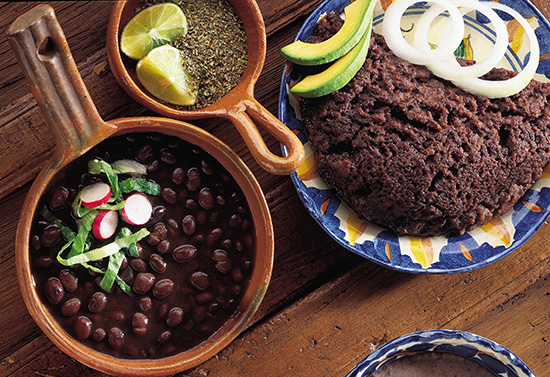
Mexican beans have a high nutritional value, since it provides almost 300 calories per 100 g of product, with the 2% of fat. Due to their large fiber’s amount they are very filling.
Furthermore, as all legumes, beans are rich in proteins- 25 g per 100g of product- and this is the characteristic that people who don’t eat meat appreciate the most, since they can find a protein source replacement, that is equally nourishing even if it is completely vegetable, rich in carbohydrates, vitamins and minerals like iron and phosphorous.
The typical black color of Mexican beans it’s due to anthocyanin. It is a valuable substance with antioxidant properties, that is capable of preventing free radicals’ effects, so to prevent cells aging. Furthermore, since they contain also molecules like bioflavonoids, beans represent a valuable help in activating the capillary micro-circulation and strengthening venous walls.
Black, red…and many more
In Mexico beans really come in all colors: beside the classic black skin, there are white kinds beans – very similar to Italian navy beans- and also yellow, pink, striped –like Italian borlotti beans- and even green brown and purple, with an intense and very aromatic taste.
They are perfectly paired with rice and used in many different recipes.
The typical Mexican beans, as they are known and widespread all over the world, are black and small and they can be simmered or stewed, due to their thick and firm skin, and they are suitable for slow and light cooking. Once they are cooked they are sifted, blended and transformed into a purée or a pâté to be spread on grilled bread rubbed with a garlic clove.
In Mexico, black beans usually go with every kind of dish, may it be rice, meat or vegetable, due to their sweet taste that perfectly contrasts with the chili pepper’s spiciness.
The Red Kidneys are a different matter. This red beans are, indeed, typically American too, but they aren’t specifically from South America, therefore Mexican.
They come from the USA and, due to their even more floury consistency, they are perfect as well for soups and also for rice or proteins dishes. They are also used in the Tex-Mex cuisine, the one that blends the taste of the nearby Mexico with specialties of border States like Mexico. The famous chili con carne, to name one.
How to cook Mexican beans?
In Mexico, the classic kinds of beans (black or red ones) are often eaten with meat or rice. The white and the pink ones are used especially to cook soups with vegetables.
Even if the Mexican cuisine is usually known to be very tasty and spicy, its typical dishes are characterized by being very spiced due to the large use of coriander, thyme, cumin, marjoram, rosemary and even cinnamon, that can often be found in savory recipes.
In the Mexican culinary tradition frijoles refries (fried twice) are a must. They are a specialty that often goes with chicken and other meats’ dishes and very used as the filling of quesadillas or tortillas. It’s a bean cream made with cooked beans that are stir fried with a lot of spices.
The typical Mexican beans used for this recipe are the black ones, but also the Pinto kind can be used. They are light colored, similar to Italian Borlotto beans.
For a perfect outcome of this recipe the onion and carrots- and also garlic, if you like it- sofrito is essential.
The secret for the success of this recipe? The beans’ cooking must be slow-cooked on low heat, preferably in an earthenware pot. The food service’s needs don’t match the large amount of time needed to prepare this recipe, that needs also regular checking and a considerable amount of energy. That’s why Fine Food Group offers a selection of amazing beans, that include the Whole black beans and both dark and light Refried beans, produced by LaCosteña company, the leading company in producing high-quality Mexican food.
These specialties are already cooked and they just need to be stewed with a sofrito in a pan, seasoning them with spices and chili peppers and adding other vegetables, like peppers and tomatoes, to taste, or balancing the intensity with delicate leafy vegetables like chards, that make possible to make amazing typical dishes or new creations within an acceptable time, if not even fast.
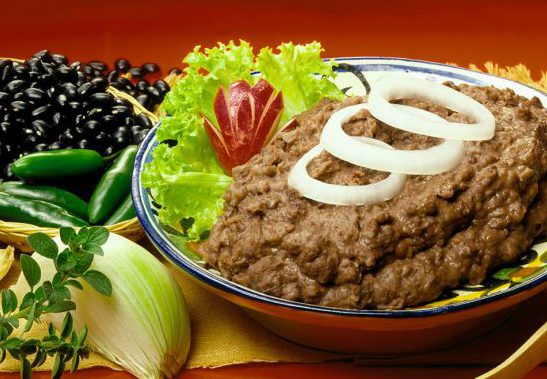
How do they eat beans in Mexico?
A typical Mexican meal begins with starters, dressed with tasty sauces, it continues with rice and beans, stuffed vegetables, meat or every kind of fish, and also the classic enchiladas, the cheese quesadillas or the well-known tortillas, filled with red beans chiliand a kind of meat ragu.
Mexican soups aren’t very thick: on the contrary, due to the significant presence of spices, a lot of water or broth is needed, in order to tone down the taste and allow us to enjoy the spiciness of the chili pepper.
However, Mexico has also his oceanic coasts, where a lot of fish is eaten and where particularly tasty seafood can be found. Beans are appreciated in the “sea combination” too.
Mexican people cook beans with different kinds of chili peppers, that are protagonists in all the traditional recipes, and, furthermore, they know many spices and herbs that they use often: cumin, clove, thyme, marjoram, rosemary and also vanilla and cinnamon, that can be found in savory recipes as well.
Mexican people, for beans based recipes, not only use different kinds with different kinds of chili peppers, that are protagonists in all the traditional recipesbut they also know many spicesand herbs that they often: cumin, clove, thyme, marjoram, rosemary and also vanilla and cinnamon, that can be found in savory recipes as well.
The spiced beans dishes are usually served as a side-dish of stewed or grilled meat, but they often can be part of the ingredients of the tortillas filling, or they can be served as dinner starters.
These dishes have simple main ingredients and the recipes to make them are quite easy too. Besides the black beans, other kinds of beans can be used as well. Most of the time they are very spicy, due to the ever-present chili pepper, which, depending on the different variety, gives the dishes a different degree of spiciness.
From Tex-Mex to vegetarian cuisine

One of the most famous Tex-Mex dishes is Mexican-style beans, probably named after the use of the typical Mexican black beans, although the presence of the meat in the recipe meat surely comes from the nearby Texas.
This delicious dish, besides the famous typical black Mexican beans, is made with and it is made particularly spicy by the well-known chili pepper.
The ideal kind of beans is the medium size one, the easiest to be found on the market, although slightly bigger ones can be fine too. In the Fine Food Group catalogue section
They are delicious when eaten with warm or slightly grilled bread, however, if you prefer to be faithful to the Mexican tradition, they can be served with white flour, corn or wheat tortillas. The Fine Food Group catalogue also help you to choose the perfect tortilla.
If you want to create a “European” version of this dish, it will be enough to replace the sausage with bacon, lard or guanciale, anything that can make beans “greasier”, enhancing its strong taste. It can be fine to add tomatoes and an onion sofrito where beans can brown, and then be stewed.
Mexican beans are a cornerstone of vegetarian diets and of veganism. Since they’re rich-in proteins they’re ideal to replace meat and animal proteins. Besides the unlimited Italian traditional recipes, there are many traditional Mexican dishes that ignore meat to the benefit of a wide choice of vegetal food.
Conclusions and suggestions
As we have seen, it’s not very difficult to suggest Mexican beans dishes. In order to make the choice of a Mexican menu even easier, in the Fine Food Group catalogue the main products are available, with a very selective eye for quality, online too. For those who choose to set the offer of their restaurants or their bars on the Mexican, American or Tex-Mex cuisine, or if they choose to offer a wider choice with some typical dishes, Fine Food Group is the perfect partner.
Focusing on the food services’ needs, Fine Food Group’s overall commitment is being a 360° supportive partner, giving suggestions that meet every need, not just taking care of selecting and offering the area’s best, but also being widely operative throughout the country with a top-class delivery service on refrigerated trucks.
Last but not least, fine food group customer care is always operating, as well as the consultancy network, and available nationwide to answer every question, to provide useful information about productsfor sale and to plan a menu suitable for every kind of activity in the food and catering fields.



